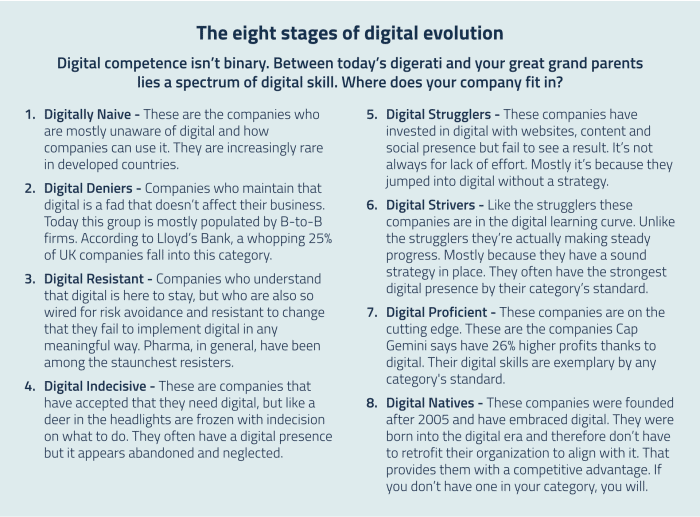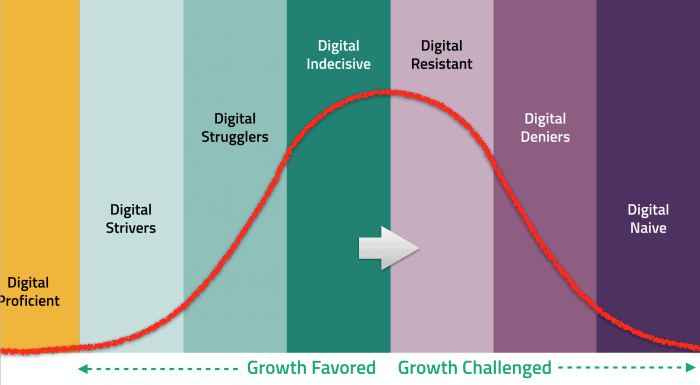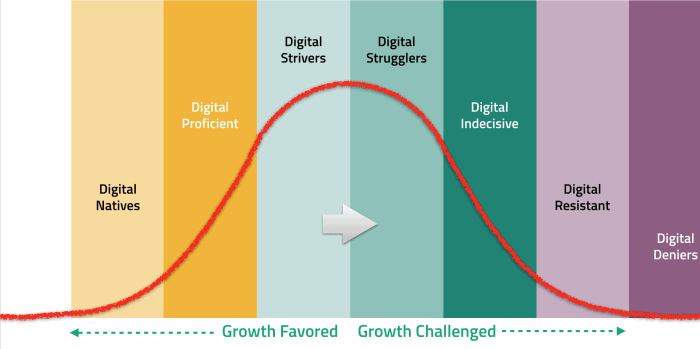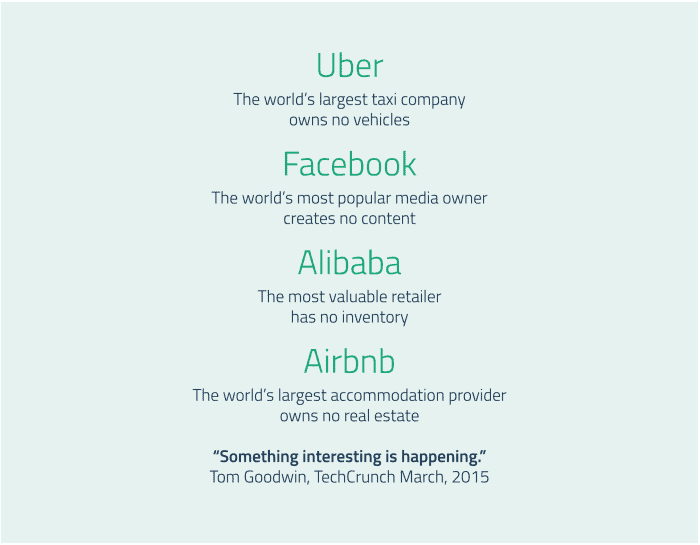How digitally evolved is your company?
In my previous post on Growth Strategy, I mentioned the various stages of digital evolution businesses have been going through. A decade ago...
18 Feb 2025 11825 Views In my previous post on Growth Strategy, I mentioned the various stages of digital evolution businesses have been going through. A decade ago, the link between growth and a company’s digital competence was tenuous. Because of that companies could rely on outsourced digital competence and get along fine. That’s changed.
In my previous post on Growth Strategy, I mentioned the various stages of digital evolution businesses have been going through. A decade ago, the link between growth and a company’s digital competence was tenuous. Because of that companies could rely on outsourced digital competence and get along fine. That’s changed.
Over the past ten years, the role and prevalence of digital in marketing has made it an integral part of growth. Today, lack of digital skills alone can grind growth to a halt and render an otherwise healthy company vulnerable to more digital savvy competitors. We’ve seen this with large companies like Sears, Borders and Blockbuster. But for each one of these high profile digital disaster stories there are 10,000 companies you’ve never heard of struggling to grow with their own digital blind spot.
Is digital competence crucial in business growth?
A recent Harris Poll underscored this problem in the US where only one in ten U.S. workers consider themselves proficient with the digital tools, no less digital strategy. In the UK, a recent survey by Lloyds Bank found that in 2015 around a quarter of all UK small to mid-sized enterprises still lacks basic digital skills like running a website, using e-commerce or maintaining a social media presence. The same report showed that companies with strong digital skills were one third more likely to see growth than their digitally-deficient counterparts. Despite that, 25% of the CEOs surveyed feel digital is irrelevant for their business. A Cap Gemini report cites 77% of companies considered missing digital skills as the key hurdle to their goals. It also reports that companies with strong digital competence are, on average, 26% more profitable than their industry competitors.
Clearly, business is still in period of digital transformation where digital competence is still the exception yet is increasingly becoming a prerequisite to growth. Since companies can’t outsource their growth like they can their web design, it stands to reason that they need to get up to speed. And the first step is understanding where they stand today.
Read also: Five Ways Digital Is Redefining Growth Strategy
How to check digital competence of your company? Exercise
To that end, I thought I’d share an exercise we use in our growth workshops. We start the exercise by asking participants to assess their digital competence vs that of their competitors on an eight-point scale. The scale represents the range of digital competence we’ve seen companies moving through over the past decade.

If we go back a decade you can see how things were around 2005.

Digital Naives, Deniers, Resisters and more… Aproaches to the Digital Era
Social media hadn’t started at this point, but it was apparent that digital was here to stay. So the Digital Naives, who weren’t aware of digital, were dying off. The Digital Deniers were still going strong though, claiming that the whole thing was a fad. Digital Resisters were the folks who rationally accepted that digital was going to be important but were wired to avoid risk and resist change in any form. The Digital Indecisive had accepted digital but like a deer in the headlights were frozen with indecision on how to start. Digital strugglers had jumped into the fray and were doing lots of digital stuff but not seeing much of a business result. Digital strivers were still in the learning curve but making clear progress, often leading their category. The digital proficient were companies who were on the cutting edge and whose digital skill was exemplary by any category’s standards.
If we look at how this picture has changed in 2015 you can see everything has moved down to the right.

There are no more Digital Naive and the Digital Deniers, for the most part, have either been converted or gone out of business. Digital Resisters are still there, but fading fast. The Digital Indecisive still holding their own. Today most companies are falling into the Strugglers and Strivers categories. Digital Proficients are coming on strong and over the next decade will dominate the curve. Along with a new category called “Digital Natives”.
New era in business – Digital Natives
These Digital Native companies represent a new era in business. All the other categories we spoke about are dealing with how to retrofit their existing business to work under the new reality of a wired world. Digital Natives, on the other hand, don’t need to retrofit. They were born digital, most over the last decade or so. They are a product of the information age. It’s all they know.
Digital Native Companies Examples

These are good examples of digital-native companies. You’ve probably seen this, its been shared a lot on LinkedIn and Facebook. These companies don’t question the internet like older companies do. They acknowledge that the internet changed the rules of the game and they are designed from the ground up to play under those new rules. These are examples from Transportation, Media, Retail and Hospitality. It’s just a matter of time before your category has a similar example. So what if your company isn’t a digital native: Are you doomed? Not at all, but I do think you need to act (sooner rather than later).
Digitally proficient brands like Nike and Netflix show us how you don’t need to be a digital native to thrive. But I do believe you will need to be Digital Proficient to thrive, if not survive over the next decade. Digitally Proficient brands are the only legacy brands that stand a chance competing against a comparable Digital Native brands. And evolution won’t stop with the digital natives. In time, that advantage will yield to more refined digital players such as the Digitally Personalized companies that have completely tailored their offer to the individual.
No matter where you fall on this scale, the lesson is that if you want to keep growing, you’ll need to keep up with the curve and constantly evolve.
Read also: How to use memes in digital marketing.
Like this post? You'll find more marketing insights in my new book: International Brand Strategy: A guide to achieving global brand growth, now available from booksellers globally. Order your copy here.







2 replies